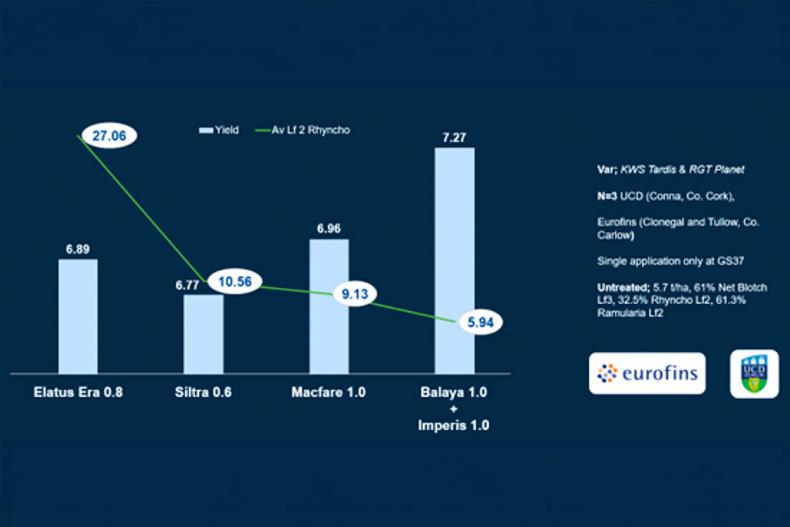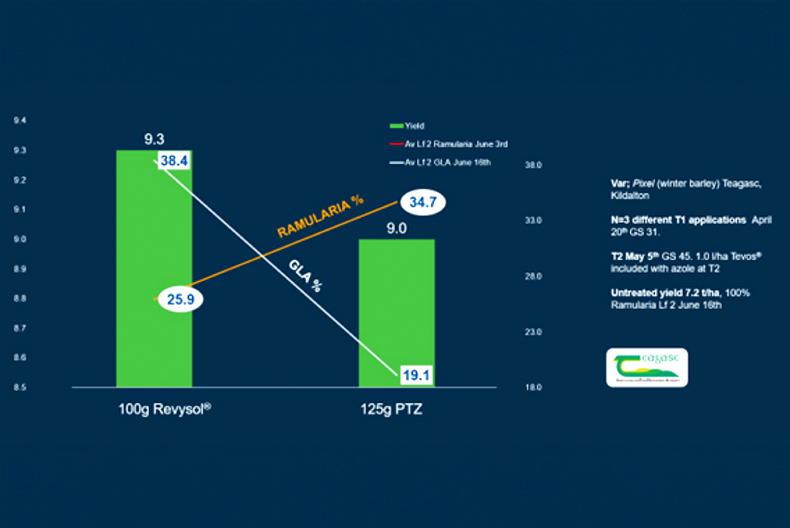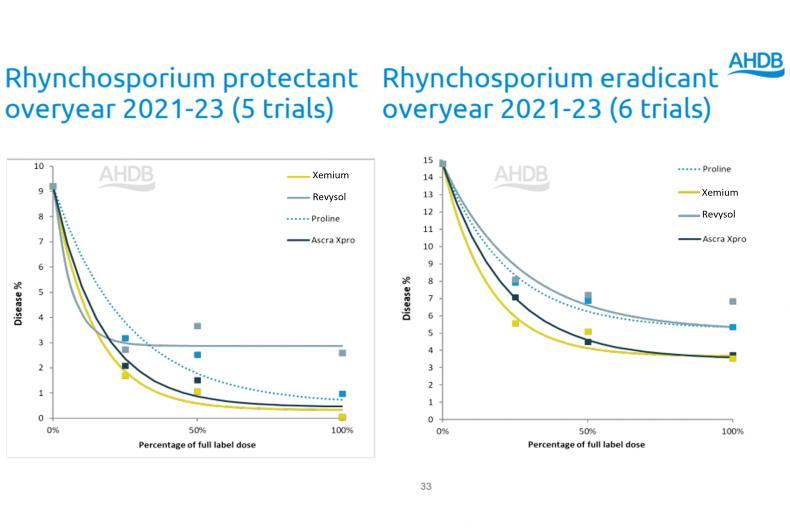In terms of winter crops, jobs continue to stack up, with a range of crop protection applications still to be applied. Fungicide decision making is proving difficult, as growers battle with limited spray opportunities.
The growing season for spring cereals has been drastically reduced, as, to date, very few cereals have been drilled.
As a result, cereals will race through growth stages, meaning that crop protection decisions will need to be focused and tailored accordingly.
When planning fungicide programmes, it is crucial that growers use appropriate chemistry that matches the specific disease and its associated risk, which varies according to the season.
Unsurprisingly, wet weather diseases are currently at the forefront of growers’ minds in winter crops.
Revymaxx®, a new barley pack from BASF, contains the three leading actives for disease control in barley: F500® (pyraclostrobin) – a leading AI for net blotch control; Xemium® - the strongest AI for rhynchosporium control; and Revysol® - the new benchmark for ramularia control.
This new solution enables growers to effectively control a range of diseases in their barley crops this season, giving triple barley protection.

Barley is a sensitive crop and in order to achieve the crop’s maximum yield potential, growers need to adopt a universal approach, which includes a high level of detailed management from the start.
BASF business development manager David Leahy said: “Because barley yield is sink limited, with yield dictated by the number of tillers and ears that the crop maintains, everything we do with the barley crop early in the season has a knock-on effect.”
Early-season disease control is critical for tiller retention and a robust programmed approach in season will not only benefit yield, it’s also the best way to lessen the threat which ramularia poses later in the season.
David said: “Ramularia needs to be a consideration from the day the crop is drilled. Reducing stress throughout the crop’s life can help delay the onset of ramularia and allow the potential to be fulfilled.
"The control of primary diseases - rhynchosporium, net blotch, brown rust and mildew - is obviously key. However, this also has a positive effect on delaying the onset of ramularia by reducing the stress burden on the crop.

"A programmed approach to disease control is essential in barley, with a T1 application at late tillering to GS30/31 being essential in managing primary diseases which risk compromising yield while also setting the crop up to perform.
"A T2 application at GS45 focuses on protecting this yield potential, which has already been created, and is essential to keep the crop photosynthesising to maximise grain yield.
"BASF’s new Revymaxx® barley pack offers a management solution for the main barley diseases, containing the three leading actives proven across different seasons, disease situations and varieties.”
F500® is the leading strobilurin on barley, the backbone to achieving reliable net blotch and brown rust control.
There are many resistant strains within the net blotch population including high levels of the F129L mutation which targets the strobilurins. However, F500® gives good control of this mutation.
In addition to disease control, F500® also brings physiological benefits to the plant, including reducing ethylene production in the stem, which in turn reduces stress.
Xemium® is the strongest SDHI available on barley and delivers the highest level of efficacy on rhynchosporium, the major yield-robbing disease in barley.
Xemium® is also proven to improve straw quality and reduce brackling, which is often an issue with modern high-yielding varieties and so ensures easier harvesting.







 This is a subscriber-only article
This is a subscriber-only article




